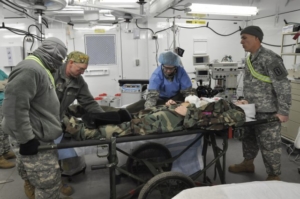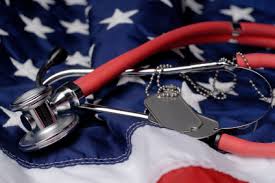Survival Rates Improving For Wounded Soldiers

By Debbie Gregory.
Despite the rising severity of battle injuries from increasingly lethal weapons, some 92 percent of soldiers wounded in Iraq and Afghanistan have made it home alive.
Every war brings medical innovations, as horrific injuries force surgeons to come up with new ways to save lives.
Civil War doctors learned better ways to amputate limbs, and in World War I, they developed the typhoid vaccine. World War II brought the mass use of penicillin. Korea and Vietnam saw the development of medical evacuation by helicopter.
Lt. Gen. Nadja Y. West, the Surgeon General of the Army, attributes the current high percentage of survival to training, medical advances, en route treatment and advanced communication.
In addition to the training of the medical personnel, soldiers are also receiving training in lifesaving techniques. This means that while an injured soldier is being transported to the hospital, there are soldiers available to assist the medics so that care begins immediately.
But while battlefield survival rates continue to improve, soldiers in future conflicts may not be so fortunate.
In the conflicts in Iraq and Afghanistan, the U.S. forces had the luxury of air superiority and could evacuate casualties almost at will. But in the future, U.S. forces may not have the same level of air superiority that was on hand in Iraq and Afghanistan.
As a result, the Army may be asking a lot more of its medics in future conflicts. That might mean teaching them sophisticated techniques and procedures that they currently don’t perform. First responders, those non-medics in the fight, will also be asked to do more.
One possible aid in the future might be medical sensors that can collect and relay medical data to an intensive care specialist, or a vascular surgeon in the U.S.
Military Connection salutes and proudly serves veterans and service members in the Army, Navy, Air Force, Marines, Coast Guard, Guard and Reserve, and their families.


























